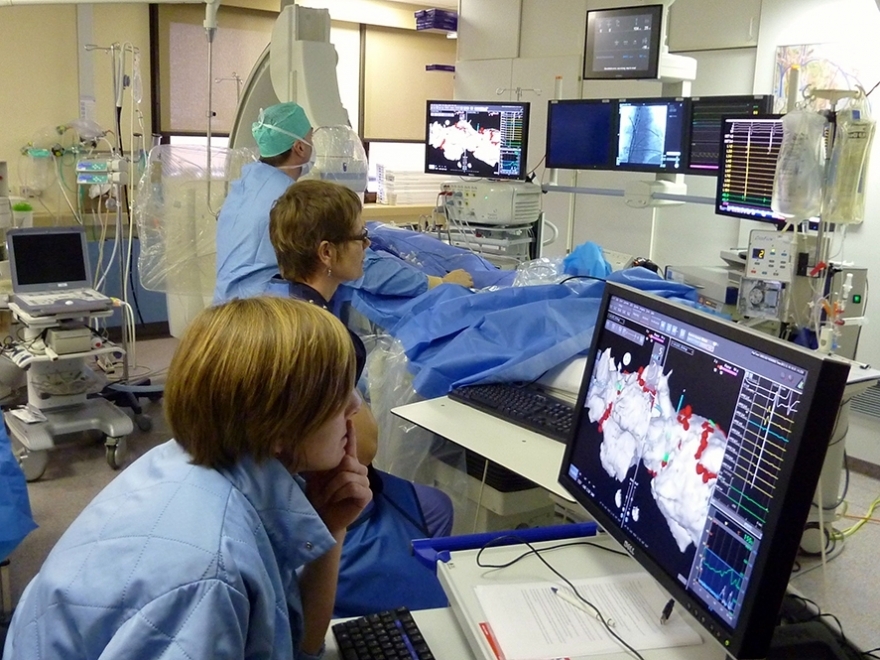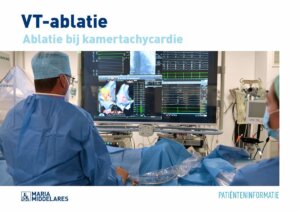Ablation for atrial/ventricular tachycardia
What is it?
What is it?Ablation is a treatment of certain heart rhythm disturbances. The rhythm disturbances often arise from a 'short circuit' in the heart's conductive tissue. Ablation can help eliminate this short circuit in the heart. Ablation is often performed immediately following the electrophysiological examination. This treatment is particularly effective for most heart rhythm disturbances and is associated with few complications, which is why it is often preferred to treatment with medication.
What is the process?
What is the process?Preparation
You will be admitted to the Hospitalisation Ward. Fasting is required for the day that you are admitted: that means at least two hours for clear fluids (only water, tea and coffee), at least six hours for a light meal and dairy products and at least eight hours for a regular meal. You may take your medication as agreed with the physician.
If recent laboratory results are not available, blood samples may be taken.
You will be given a surgical gown to wear. Shortly before the procedure, you can be provided with a tablet to help you relax. The nurse will place an IV line in your arm for the administration of medication, should that be necessary.
The procedure is performed in the cardiac catheterisation room.

Test
You take place on the examination table. Ten adhesive electrodes are placed to monitor your heart rhythm. Because the procedure may take a long time (2.5 hours) and it is extremely important that you remain still, you will receive a general anaesthetic for your comfort. An area of skin measuring 5 by 5 cm is shaved and disinfected, and adhesive sterile sheets are placed around it. The vein and artery are punctured, giving access to electrical catheters, which are led up into the heart. With the help of X-ray, the position of the catheters can be confirmed.
In some patients, the cause of the heart rhythm disturbance lies on the outside of the heart. In that case, the rhythm disturbance will be located by puncturing the pericardium below the sternum.
Using CARTO® imaging, any scars on the heart muscle and the conduction pathways are shown in 3D. The ablation catheter is used to isolate the conduction pathways that are responsible for the rhythm disturbance. After checking the result, the catheters are withdrawn. A compression bandage will be placed on the groin.
You will wake up in the recovery room. You will need to stay in the hospital for one night.
Aftercare
In order to prevent infection, it is recommended that you not bathe for the first two days (but you may shower). During the first week, heavy duty at work or physical exertion is not advisable.
What are the risks?
What are the risks?The procedures has a few risks. You may have bruising in the groin. This is best prevented by using a strong bandage and by lying flat.
If the procedure was performed through a puncture of the pericardium below the sternum, an inflammatory reaction may occur. In that case, you may need to take medication for some weeks.
Results
ResultsTreatment is expected to be successful for 90% of patients.
Leaflet
LeafletSee the leaflet below for more information.
Only available in Dutch:

VT-ablatie
DownloadCentres and specialist areas
Centres and specialist areas
Latest publication date: 16/05/2024
Supervising author: Dr Provenier Frank



